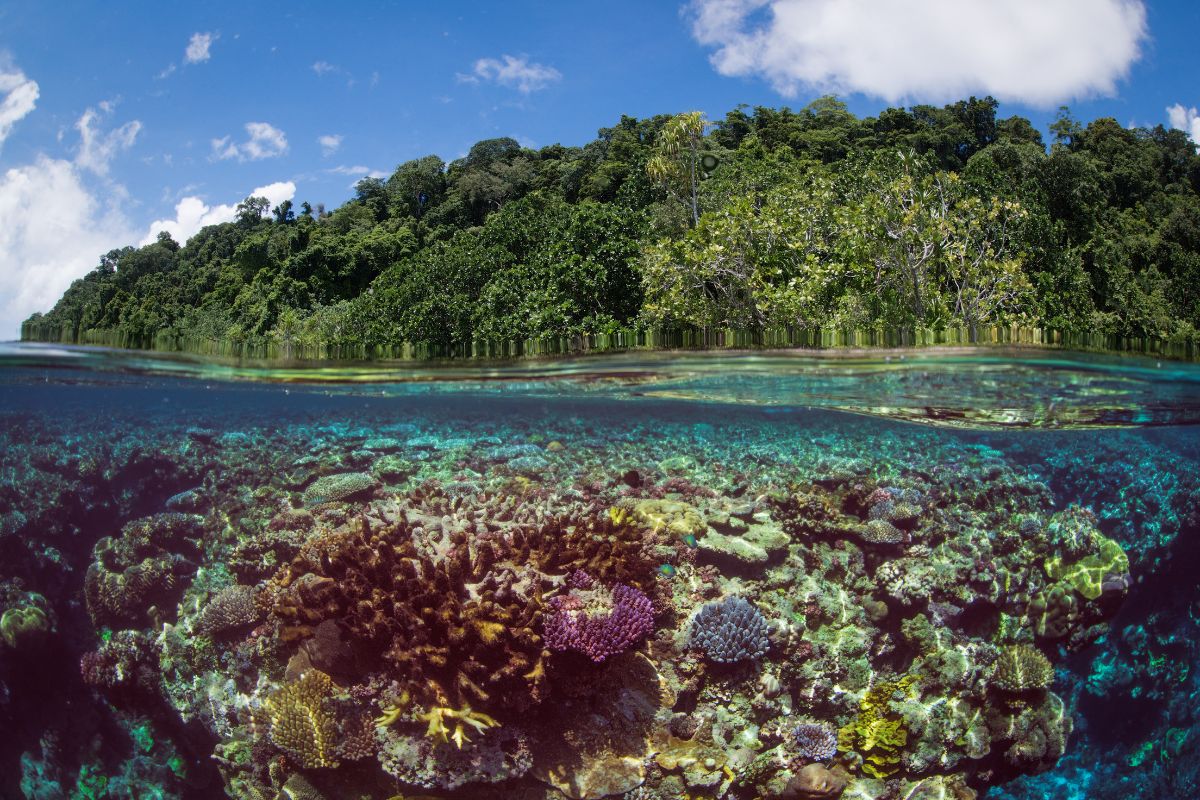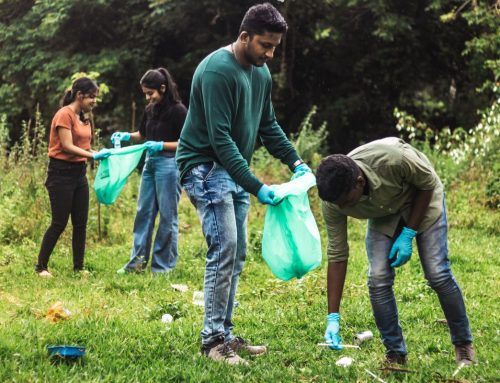What is biodiversity?
Biodiversity is the amazing variety of living things and places on Earth that make life possible. It includes all the different species of plants, animals, and other living things, along with their unique traits and the places they live. With a several biodiversity facts to taking care of this diverse network of life is crucial for a healthy and successful planet.
This variety of life keeps nature strong and steady, helping us in many ways, like giving us food and clean air. Biodiversity keeps nature in balance, making sure everything works as it should. It’s also valuable for our culture, beauty, and scientific knowledge.
Why is biodiversity important to us?
Biodiversity is really important for us because it keeps life going on Earth. It includes all kinds of living things, environments, and the different traits they have. This variety is crucial for us because it gives us services that we need to survive.
Biodiversity helps farming by making sure plants get pollinated, the soil stays healthy, and pests are kept under control. This helps keep our food supply secure. It also gives us lots of medicinal resources that are used in medicines we use every day.
Different environments help control the climate, clean the air and water, and even lower the impact of natural disasters.
Besides providing useful resources, biodiversity makes our lives richer culturally, spiritually, and in beauty. Understanding how important it is helps us make sure we live in a way that keeps the planet healthy for now and the future.
Protecting biodiversity isn’t just about saving different species; it’s about making sure life on Earth, including human life, stays healthy and thriving.

30 biodiversity facts
-
The biodiversity holds around 8.7 million species
- Scientists have identified about 8.7 million species on Earth, ranging from tiny organisms to big animals. But this number is probably much lower than the real total because many species are still unknown, especially in remote areas like deep oceans and tropical rainforests.
-
Rainforests are home to half of the world’s plant and animal species
- Despite being found on only 6% of Earth’s land, rainforests are packed with an amazing variety of life. They’re home to nearly half of all the world’s plants and animals, making them vital spots for biodiversity and adding a lot to Earth’s diversity of life.
-
Coral reefs are vibrant and diverse underwater ecosystems, often referred to as the “rainforests of the sea.”
- These structures support an estimated 25% of all marine species, despite accounting for less than 1% of the ocean’s surface area. Its extraordinary biodiversity includes a great variety of fish, invertebrates and other organisms, which contribute greatly to the diversity of marine life.
-
Biodiversity Hotspots, the key centers for plant diversity
- Biodiversity hotspots, despite covering only 2.3% of the Earth’s surface, contain a wildly rich variety of biodiversity. These areas are home to more than 50% of the world’s plant species and around 43% of bird, mammal, reptile and amphibian species, underlining their crucial importance for global biodiversity conservation.
-
Pollinator’s essential role in food production
- Bees, butterflies and birds are vital to global food production, as they provide pollination for approximately 75% of all crops worldwide. Their activities are critical to plant reproduction, ensuring the production of fruits and seeds that sustain agricultural ecosystems and support the global food supply.
-
Alarming Biodiversity Decline
- Human activities have escalated biodiversity loss to alarming levels, leading species extinctions to be up to 1,000 times higher than natural background rates. This increased risk of extinction is mainly due to habitat destruction, climate change, pollution, invasive species, and overexploitation, which poses a substantial threat to global biodiversity.
-
Consequences of biodiversity loss on ecosystem functions
- The loss of biodiversity has profound consequences for ecosystem functions, impacting critical processes such as pollination, nutrient cycling, and natural pest control. Reduced biodiversity can disrupt these essential services, affecting the stability and resilience of ecosystems.
-
Importance of genetic diversity for species adaptation
- Genetic diversity within species is crucial for adaptation and resilience to changing environmental conditions. It enables species to evolve and survive, enhancing their ability to respond to environmental challenges such as climate change, diseases, and habitat alterations.
-
Economic dependence on biological products
- About 40% of the world’s economy relies on biological products and processes. Industries such as pharmaceuticals, agriculture, and ecotourism heavily depend on biodiversity for resources, inspiration, and economic activities.
-
Indigenous knowledge and biodiversity conservation
- Indigenous communities possess valuable traditional knowledge about biodiversity and its sustainable use. Their practices and insights contribute significantly to conservation efforts, offering valuable wisdom for preserving biodiversity and ecosystems.
-
Human diet dependency on a few plant and animal species
- Surprisingly, more than 80% of the human diet originates from a relatively small selection of just 12 plant species and 5 animal species. This dependence highlights the critical role these specific species play in global food security.
-
Marine biodiversity in oceans
- The world’s oceans are vast and home to a remarkable diversity of life. With an estimated 200,000 identified species inhabiting oceanic environments, the actual number could be exponentially higher, potentially encompassing millions more species yet to be discovered and studied.
-
Threats to amphibians and extinction risk
- Amphibians face significant threats, with approximately 40% of species at risk of extinction. Factors such as habitat loss, climate change, pollution, and diseases like chytrid fungus pose severe challenges to the survival of these diverse and ecologically important creatures.
-
Biodiversity loss and its impact on human health
- Biodiversity loss can have direct implications for human health by increasing the risk of zoonotic diseases. Alterations in ecosystems and the decline of certain species may lead to the emergence and spread of diseases transmitted from animals to humans, posing health risks on a global scale.
-
Forest’s vital role in biodiversity
- Protecting and restoring forests is vital for biodiversity. They serve as crucial habitats for diverse plant and animal species, offering various ecosystems and niches. Forests also play a key role in regulating climate by absorbing carbon dioxide, mitigating climate change, and maintaining ecological balance. Preserving forests is essential for biodiversity hotspots, wildlife sustenance, and ecosystem services.
-
IUCN red list and endangered species
- The IUCN Red List assesses species’ conservation status globally, highlighting over 38,000 species threatened with extinction due to factors like habitat loss, overexploitation, climate change, and pollution. This list guides conservation efforts, prioritizing species needing urgent protection to prevent their disappearance.
-
Significance of mangrove forests in coastal protection
- Mangrove forests, predominantly found in tropical and subtropical regions along coastlines, are invaluable ecosystems that support diverse flora and fauna. They act as natural buffers against coastal erosion, shielding coastlines from the impact of storms, tidal waves, and floods. These unique forests serve as nurseries for marine life, offer habitats for various species, and play essential roles in carbon sequestration and maintaining coastal biodiversity.
-
Climate change threats to coral reefs
- Climate change poses a severe threat to coral reefs worldwide, with over 90% expected to be at risk by 2030. Rising sea temperatures, ocean acidification, and pollution are causing widespread coral bleaching events, leading to the degradation of these vibrant marine ecosystems. The decline of coral reefs imperils countless marine species that depend on them for food, shelter, and breeding grounds.
-
The Amazon rainforest
- Biodiversity marvel: The Amazon, Earth’s largest tropical rainforest, shelters about 10% of known species. Spanning multiple countries, it hosts an exceptional range of plants and animals, including numerous yet-to-be-discovered species. Protecting it is crucial for global biodiversity and helps combat climate change by storing carbon. We recommend you to visit our blog to explore the best places to de Ecotourism in United States.
-
The Convention on Biological Diversity (CBD)
- The Convention on Biological Diversity (CBD) is an international agreement dedicated to conserving biodiversity, ensuring its sustainable use, and promoting the equitable sharing of its benefits. Adopted by numerous countries, the CBD aims to safeguard ecosystems, genetic resources, and species diversity while fostering global collaboration and commitment to biodiversity conservation.
-
Threat of wildlife trafficking
- Wildlife trafficking, characterized by the illegal trade in wildlife and their products, poses a significant threat to many species. Endangered animals like rhinos, elephants, and tigers face severe risks from poaching and illegal trade, jeopardizing their survival. Combatting wildlife trafficking requires concerted efforts involving law enforcement, international cooperation, and public awareness to curb this illicit trade and protect endangered species.
-
Essentiality of ecosystem restoration and conservation
- Ecosystem restoration and conservation efforts, such as reforestation initiatives and the establishment of protected areas, are critical strategies for preserving biodiversity. These efforts aim to restore degraded habitats, protect vulnerable ecosystems, and create sanctuaries for threatened species, contributing significantly to biodiversity conservation and the restoration of ecological balance.
-
Economic implications of biodiversity loss
- Biodiversity loss carries significant economic consequences, impacting agricultural productivity and industries reliant on natural resources. Diminished biodiversity can result in reduced crop yields, loss of ecosystem services, and potential disruptions to industries, emphasizing the interdependence between biodiversity and economic stability.
-
Declining insect populations and their importance
- Insects constitute a critical component of biodiversity, with an estimated 10 million species contributing to various ecological functions. However, many insect populations are declining due to factors such as habitat loss, pesticide use, and climate change. Preserving insect diversity is essential as they play vital roles in pollination, nutrient cycling, pest control, and serving as food sources for other organisms.
-
The significance of wetlands in ecosystem services
- Wetlands, including marshes and swamps, offer invaluable ecosystem services crucial for environmental health. They provide water purification by filtering pollutants, serve as natural flood buffers by absorbing excess water, and offer habitats for diverse wildlife. Wetlands are vital ecosystems supporting numerous species and are indispensable for maintaining ecological balance and human well-being.
-
The Arctic, known for its harsh conditions
- The artic hosts an array of wildlife such as polar bears, seals, various whale species, and a multitude of birds. This frigid realm supports diverse ecosystems vital for these creatures’ survival in extreme cold climates.
-
The economic value of biodiversity
- Biodiversity provides an extensive range of ecosystem services valued at an estimated $33 trillion annually. These services encompass various contributions such as pollination, nutrient cycling, soil formation, climate regulation, and provisioning of resources, significantly impacting human well-being and global economies.
-
The role of species interactions in ecosystems
- Species interactions, including predator-prey relationships and mutualistic associations, are fundamental for ecosystem functioning and stability. These interactions regulate population dynamics, support food webs, and maintain ecological balance, highlighting the intricate interconnections among species and their significance for ecosystem resilience.
-
Collaborative conservation efforts
- Conservation often involves cooperation among governments, scientists, NGOs, local communities, and global initiatives. This collaboration enhances the sharing of knowledge and resources, boosting conservation efforts and advocating effective strategies for biodiversity preservation.
-
Urgency of Sustainable Practices
- Sustainable practices, such as biodiversity conservation and mitigating human impacts on ecosystems, are critical for protecting Earth’s biodiversity for future generations. Embracing sustainability means managing resources responsibly, reducing ecological footprints, and prioritizing conservation to ensure the endurance of global biodiversity.
To sum up, biodiversity is like the Earth’s life foundation, with its amazing mix of species, environments, and important roles. It’s not just beautiful; it’s vital for keeping nature balanced, supporting human life, and keeping our planet healthy. But human actions are putting it in danger.
Saving and taking care of biodiversity is super important for a future where life can keep thriving. It needs everyone to work together to protect this essential web of life for the coming generations.
At Roll’eat we are very aware of the importance of maintaining biodiversity, that is why the main benefit of our products is to stop using single-use packaging such as foil and plastic wrap, as these are very polluting to the planet. Discover our reusable alternative, the Boc’n’Roll and Snack’n’Go.









